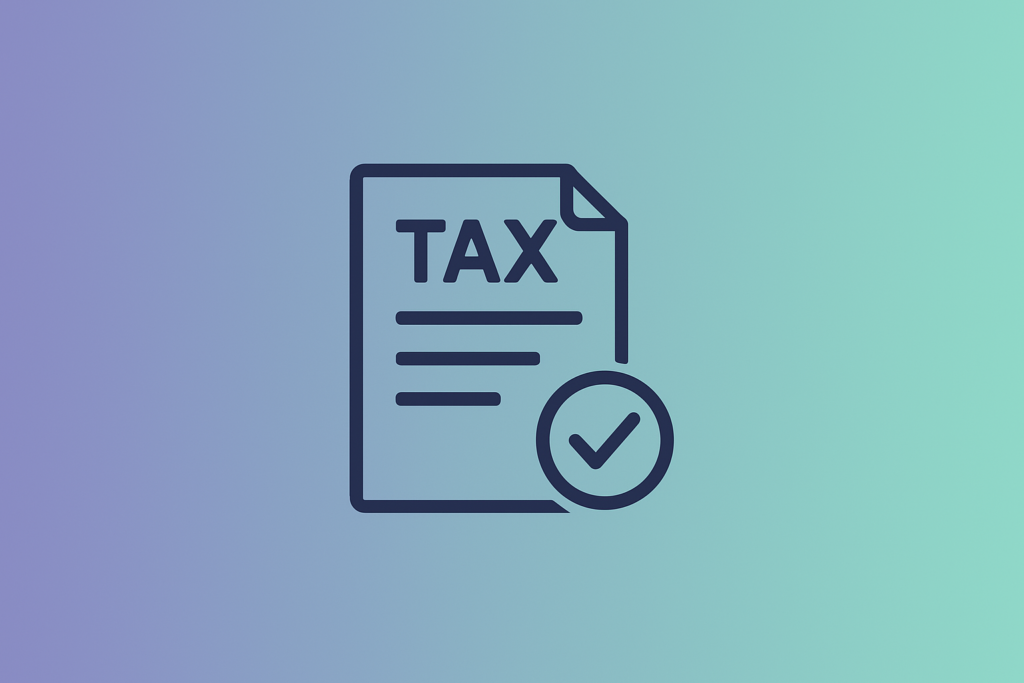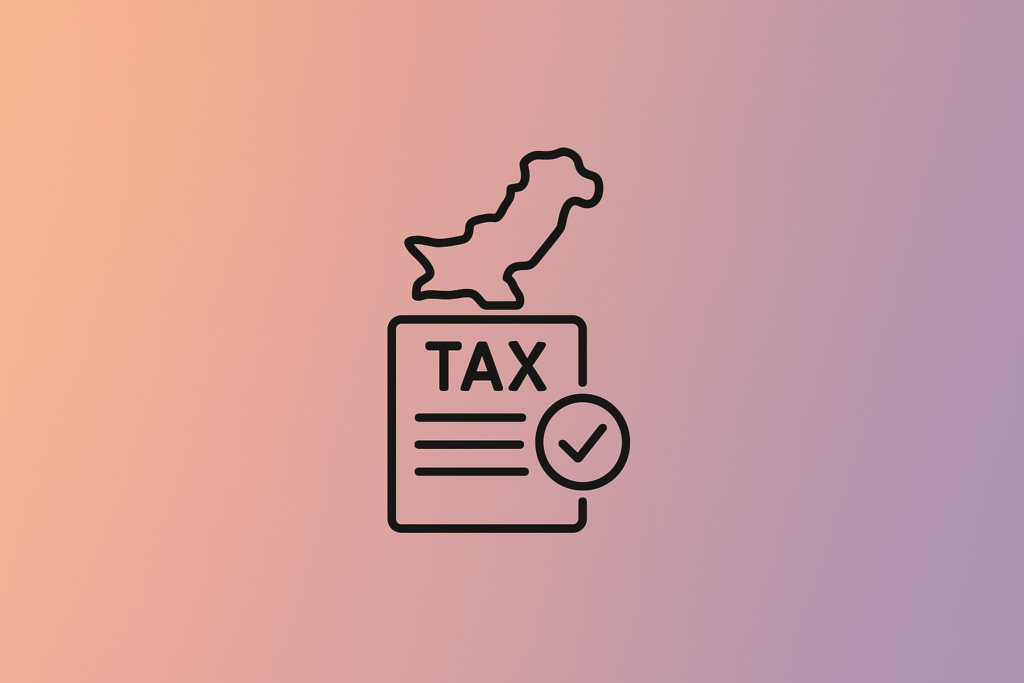Hey, Shahzad here.
If you’re a salaried person living in Pakistan, I’ve got news for you.
You’re probably already paying taxes every month — but chances are, you have no idea what’s actually being deducted, how much you’re legally liable to pay, or even whether you can claim some of that money back.
As a legal tax advisor, I’ve worked with hundreds of salaried professionals across Pakistan — teachers, engineers, designers, bankers — and almost every one of them has asked me this question at some point:
“Do I really need to file my tax return if it’s already deducted from my salary?”
Short answer? Yes. 100% yes.
And the long answer? That’s what this guide is for.
In this article, I’ll break down everything you need to gather, understand, and submit when filing your tax return as a salaried individual in Pakistan — whether you’re filing for the first time or just want to stop overpaying every year.
Let’s get started.
Why You Still Need to File a Tax Return (Even if Your Employer Deduces Tax)
Here’s a little myth I bust every day:
“My employer already deducts tax, so I don’t need to do anything.”
Wrong.
Yes, if you work in a formal job — especially in a multinational or a bank — they probably deduct advance income tax from your monthly salary and submit it to the Federal Board of Revenue (FBR) on your behalf.
But what they don’t do is file your personal return or submit your wealth statement. And those are legally required.
More importantly, if you don’t file:
- Your name won’t appear in the Active Taxpayer List (ATL) — which means you pay higher withholding tax on everything from vehicle registration to bank transfers
- You can’t claim tax refunds on overpaid amounts
- You can’t benefit from legal deductions (like insurance, education expenses, or medical allowances)
- You risk penalties, fines, or worse — a system-generated audit
I’ve helped dozens of salaried clients who were entitled to tax refunds of Rs. 30,000 to 100,000 — money they never knew they could get back.
And it all started with filing the return themselves.
So if you want to save money, stay compliant, and future-proof your finances — let’s walk through the checklist.
The Ultimate Tax Filing Checklist for Salaried Individuals in Pakistan
Filing taxes in Pakistan is like preparing for an exam: if you have the right material, it’s easy. If not, it’s stress and guesswork.
That’s why I always recommend preparing a checklist of documents and details before even logging into the IRIS portal.
Here’s the full list I use with my clients.
✅ 1. Salary Certificate from Your Employer
This is the most essential document. It breaks down:
- Your gross annual salary
- Any allowances (house rent, medical, fuel, mobile)
- Tax deductions made during the year
Ask your HR or payroll department for the certificate. Most companies issue this automatically after June each year.
Pro tip: Make sure the deducted tax amount is clearly mentioned and matches what’s shown in IRIS later.
✅ 2. Bank Account Statements
Why do you need this?
Because it shows any additional income, such as:
- Rental payments
- Investment returns
- Dividends
- Foreign remittances (if any)
Also, FBR cross-checks your bank activity — so if there’s a mismatch between your declared income and actual credits, it can trigger a red flag.
Download 12 months’ worth of statements for all active bank accounts.
✅ 3. Proof of Tax Deducted at Source
This might come in various forms:
- Withholding tax on bank transactions
- Mobile phone recharge taxes
- Advance tax on vehicle token payments
- ATM withdrawal taxes (if you’re a non-filer)
You can usually download a Tax Deduction Certificate from your bank’s app or request it via customer support.
Later, when filing, you can claim back any excess withholding tax (if you’re a filer), which is one of the biggest money-saving advantages of filing.
✅ 4. Insurance Premium and Investment Receipts
If you’ve paid for life insurance, invested in a voluntary pension scheme, or contributed to a mutual fund, you can claim a tax credit under Section 62 of the Income Tax Ordinance.
These are fully legal deductions that reduce your taxable income, meaning you pay less tax.
Ask your insurance company or fund manager for the annual certificate — most issue it automatically to help with tax filing.
✅ 5. Rental Agreement or Property Documents (if applicable)
Own a rental property?
You need:
- A copy of the rental agreement
- Bank statement showing rent received
- Details of property ownership (sale deed, FBR-registered lease, etc.)
Rental income is taxable, but there are also deductions available for maintenance costs and property taxes paid — so you want to get this right.
✅ 6. Education Expenses for Dependent Children
Under Section 60C, you can claim up to 5% of your taxable income as a deduction for your children’s education.
You’ll need:
- School fee challans
- Payment receipts
- CNIC number of each dependent child (if available)
I recently helped a salaried client deduct Rs. 35,000 from their taxable income — just from their kids’ school fees.
If you’re paying school fees, don’t let this deduction go to waste.
Tax Deductions Every Salaried Person in Pakistan Should Know About
Here’s the golden rule I teach every client:
Your tax isn’t just what you earn — it’s what you report after legal deductions.
That means if you’re not claiming your eligible deductions, you’re probably overpaying.
Let me walk you through the top tax-saving options available to salaried individuals in Pakistan, updated for 2025:
💼 1. Voluntary Pension Scheme (VPS)
Contributions made to a VPS — such as those managed by MCB Arif Habib, UBL Funds, or Askari Investment — are tax-deductible under Section 63 of the Income Tax Ordinance.
You can claim up to 20% of your taxable income as a deduction here. That’s huge.
If you haven’t joined a VPS yet, trust me, it’s one of the smartest moves for tax saving + retirement planning.
🛡️ 2. Life Insurance Premiums
If you pay annual life insurance premiums, they’re 100% deductible (within limits). Ask your insurer (like Jubilee, EFU, or State Life) for a deduction certificate before you file.
📚 3. Educational Expenses
As I mentioned earlier, under Section 60C, up to 5% of taxable income can be deducted if you’re paying for your children’s education.
Make sure the school or university is registered and your payments are documented via proper receipts.
🧾 4. Zakat and Charitable Donations
Zakat and approved donations to registered charities are fully deductible under Section 61 — but only if you donate to an FBR-approved NGO or fund.
You can check the latest list of approved organizations here.
All these deductions legally reduce your taxable income, which directly reduces your tax liability.
Let’s move on to calculating that liability…
How to Calculate Your Tax Liability (The Right Way)
Now that you’ve gathered your documents and deductions, it’s time to do the math.
You can either do this manually or use a tax calculator like this one — which I highly recommend.
Here’s the basic idea:
- Add up your total gross income (salary + other income like rent or freelance work)
- Subtract allowable deductions (VPS, insurance, education, zakat, etc.)
- What’s left is your taxable income
- Apply the current tax slab (for salaried individuals in 2025, it ranges from 2.5% to 35% based on income brackets)
Let’s say your annual salary is Rs. 2,000,000
And you’ve claimed Rs. 200,000 in deductions
Your taxable income = Rs. 1,800,000
Your tax liability will be based on that — not the full Rs. 2M
Important:
If your employer has already deducted more than this calculated amount, you can claim a refund by filing your return.
That’s why this process matters.
Step-by-Step Guide to Filing Your Tax Return on IRIS
Here comes the part most people dread. But don’t worry — I’ve walked clients through this in real time, and I’ll walk you through it now.
Head to the FBR IRIS portal and log in with your CNIC and password.
Here’s what to do once inside:
- Click on “Declaration”
Then choose “Income Tax Return” for the relevant tax year (e.g., 2025) - Start with the Personal Information tab
Double-check all your details, including address, contact, and employment - Go to Employment Income section
Enter your gross salary and tax deducted at source (as per your salary certificate) - Fill out Tax Credits and Adjustable Withholding Taxes
Use info from your bank certificate, insurance, zakat, or education expenses - Now fill in the Wealth Statement
This is critical — even if your assets are simple (a bank balance, a car, or a rented apartment), declare them properly - Review and click “Submit”
That’s it. You’ve just filed your tax return like a pro.
Now download your acknowledgment receipt and save it.
Common Mistakes Salaried Filers Must Avoid
After auditing hundreds of returns over the years, I can confidently say these are the most frequent — and costly — errors made by salaried individuals:
❌ Skipping the Wealth Statement
Even if you don’t have big assets, skipping this gets your return marked as “incomplete.” And guess what? You still won’t be added to the Active Taxpayer List (ATL).
❌ Underreporting Salary
If your salary certificate says one thing and your return says another, FBR may issue a system-generated notice for clarification — or worse, an audit.
❌ Forgetting to Claim Refunds
Many salaried individuals don’t even realize they’re entitled to a tax refund. Always check your tax deduction and compare it with your actual liability.
❌ Filing Late
Every year, I get messages on September 30th from people scrambling to file. Avoid the last-minute rush — FBR’s servers usually crash or lag badly near the deadline.
Post-Filing: What Happens Next?
Once your return is submitted, keep a few things in mind:
- Check your ATL status after 7–10 days via this FBR ATL tool.
- If you’re due a refund, FBR may process it within 60–90 days (though sometimes longer).
- You can request corrections or revisions in IRIS if needed — especially if you made a genuine mistake.
And of course, keep PDF copies of your submission, tax certificate, and wealth statement in a secure folder for future reference.
This is your tax history — and it can save you headaches later when applying for loans, property transfers, or international travel.
Final Checklist for Salaried Tax Filers (2025)
Let’s bring it all together.
Before filing, make sure you have:
- ✅ Salary certificate
- ✅ Bank statements
- ✅ Tax deduction certificates
- ✅ Receipts for insurance, VPS, or zakat
- ✅ School fee receipts for children (if applicable)
- ✅ Property and rental documents (if applicable)
- ✅ Your IRIS login details
- ✅ At least 2 hours of calm, focused time 😅
With this checklist, you’re ready to file confidently and avoid the last-minute stress.
Last Words: Take Control, Save Money, Stay Legal
Let me leave you with this:
Tax filing isn’t just about compliance — it’s about control.
When you understand your financial footprint, claim your deductions, and stay in the ATL, you’re not just doing your duty. You’re optimizing your money.
You’re creating a tax history, protecting yourself legally, and saving hard-earned rupees that would otherwise go unclaimed.
And you don’t have to do it alone.
Because when it comes to tax preparation in Pakistan, the smart ones don’t wait. They file early. They file right. They file with confidence.
And now — so can you.



